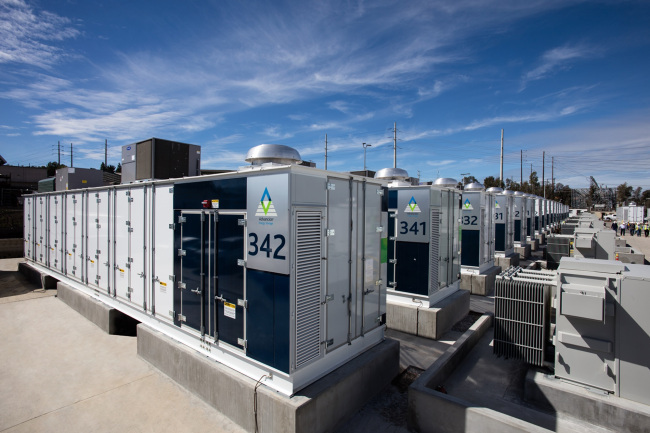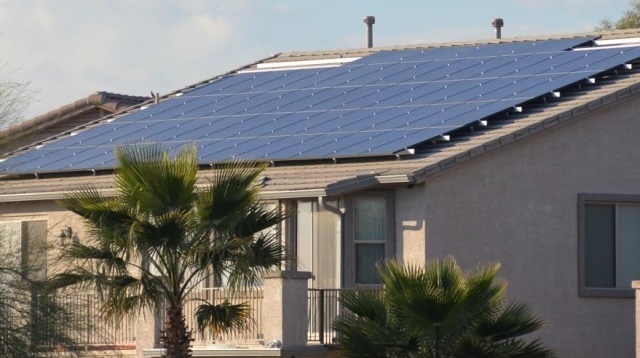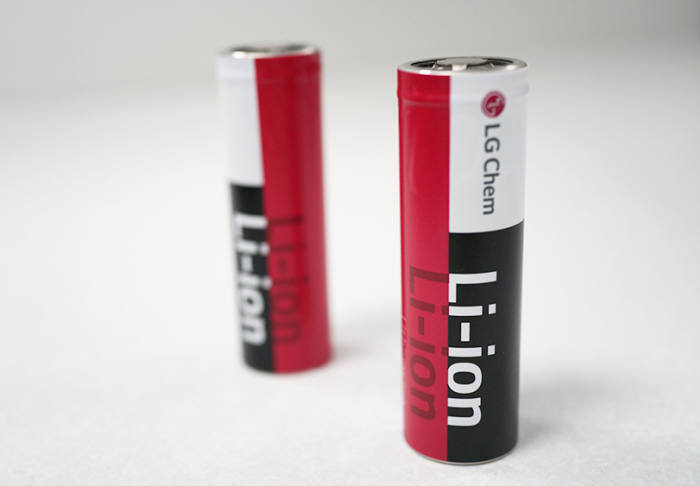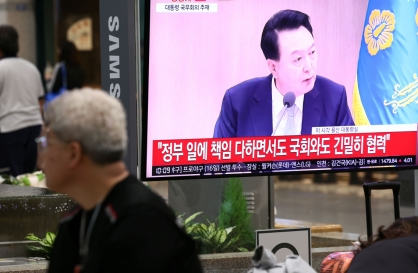[News Analysis] Can Hyundai turn dead batteries into ESS?
By Kim Byung-wookPublished : June 4, 2020 - 16:58

An unexpected collaboration was announced last Sunday, when Hyundai Motor chose Hanwha Q Cells to reuse dead electric vehicle batteries to make energy storage systems.
The two firms signed a memorandum of understanding to co-develop solar power ESS using dead batteries. The deal, to the extent of which was publicized, was seen to be rudimentary, without any size or volume of the collaboration.
As there are already major global battery-making players in South Korea, Hyundai’s choice seemed bold yet cryptic, with market watchers asking: Can Hyundai and Hanwha pull it off on their own?

In short, Hyundai seems confident it can, while battery makers are less optimistic.
But all this may not matter for a while, as there are no regulations under which the automaker can buy enough dead EV batteries to build an ESS.
ESS is a huge battery, the size of a container, that can store electricity generated by renewable energy sources such as solar power.
The Ministry of Trade, Industry and Energy has estimated that the global ESS market will jump to 35 trillion won ($28.5 billion) in 2025 from 18 trillion won this year.
Based on Hyundai’s choice of Hanwha Q Cells, it seems the automaker deems that reusing dead batteries is different from making batteries from scratch.
When asked about why Hyundai chose Hanwha Q Cells over LG Chem and SK Innovation, a company official said, “Hyundai wants to concentrate more on solar power.”
Hyundai Motor uses EV batteries made by LG Chem and SK Innovation.
“The ESS technology is not that difficult as it’s basically about reusing EV batteries, not making them from the ground up. Hyundai has enough know-how on ESS,” a company official said.
In fact, Hyundai last September installed its pilot ESS using dead EV batteries at chemical firm OCI’s 700-kilowatt capacity solar power plant in Korea and 4-megawatt capacity solar power plant in the US to test the economic feasibility. It used dead batteries of test vehicles from its research facilities.
“As long as there is a battery management system (BMS), there is no problem in utilizing dead batteries for ESS,” a Hanwha Q Cells official said. The BMS is a software or hardware that monitors and controls batteries.
However, EV battery makers suggest it may be more complicated.
The ESS technology using dead batteries is difficult even for battery makers because every single battery’s condition has to be checked before reuse.
“For example, BMW’s i3 EV is loaded 96 prismatic batteries while Tesla’s Model 3 and Model S are equipped with 4,000 and 7,000 cylindrical batteries, respectively,” an industry source said.

When EV batteries’ performance level drops to somewhere between 80 to 60 percent, they have to be replaced and can be used for ESS. However, the performance does not decline at a gradual rate, but drops suddenly at the beginning, falls slowly in the middle and plummets sharply in the end.
“Figuring out the exact performance rate of an EV battery is technologically challenging but necessary as dead EV batteries need to be grouped by similar performance levels to ensure stable operation of ESS. If Hyundai figures out the technology, it would be groundbreaking,” the source said.
Regulatory hurdles
The more immediate challenge for Hyundai in its long-term plan, meanwhile, appears to be regulations.
Even if Hyundai wants to do ESS business with dead EV batteries, it can’t get them in the first place. Battery makers, on the other hand, can use their own for ESS.
“Due to safety concerns, dead EV batteries can’t be purchased by private entities according to environmental law, though they can be leased to automakers for research purposes,” an Environment Ministry official said.
Since December 2018 in Korea, when drivers of subsidized EVs scrap their cars, they must return dead batteries to municipalities they received subsidies from. As most EVs are currently subsidized, it’s almost impossible for Hyundai to secure enough dead EV batteries needed for the commercialization of ESS.
“There hasn’t been any precedent of ESS using dead EV batteries around the world, so we don’t exactly know how much they are worth,” the ministry official said.
Once relevant regulations are lifted, the ministry may collect back the subsidies they had doled out in the form of selling the used batteries to the automakers.
But as Hyundai Motor currently bears no legal responsibility for the retrieval of dead EV batteries, tough negotiations over the price is expected.
“Currently, EV batteries are exempt from extended producer responsibility or EPR policy, so automakers aren’t required to retrieve dead batteries,” said an official from Korea Environment Corp. under the Environment Industry.
“Also, EV batteries are excluded from Korea’s waste charge system as there is only small amount of dead EV batteries so far.”
By Kim Byung-wook (kbw@heraldcorp.com)







![[From the Scene] Monks, Buddhists hail return of remains of Buddhas](http://res.heraldm.com/phpwas/restmb_idxmake.php?idx=644&simg=/content/image/2024/04/19/20240419050617_0.jpg&u=20240419175937)







![[From the Scene] Monks, Buddhists hail return of remains of Buddhas](http://res.heraldm.com/phpwas/restmb_idxmake.php?idx=652&simg=/content/image/2024/04/19/20240419050617_0.jpg&u=20240419175937)

![[KH Explains] Hyundai's full hybrid edge to pay off amid slow transition to pure EVs](http://res.heraldm.com/phpwas/restmb_idxmake.php?idx=652&simg=/content/image/2024/04/18/20240418050645_0.jpg&u=20240419100350)

![[Today’s K-pop] Illit drops debut single remix](http://res.heraldm.com/phpwas/restmb_idxmake.php?idx=642&simg=/content/image/2024/04/19/20240419050612_0.jpg&u=)